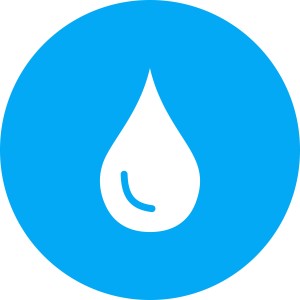Three Alternatives to Water-Intensive Fracking

Few words illicit as impassioned responses as ‘fracking,’ otherwise known as ‘fracturing’. Indeed, this natural-gas extraction method has become one of the most divisive topics in the United States today. Environmentalists are rabidly opposed to any and all types of fracking, while those in the oil and gas industries (among others) see it as a valuable source of energy and a way to further energy independence for the nation.
Fracking Detractors
The most common criticism leveled at fracking is that it has the potential to contaminate the aquifers that we rely on for drinking water. A secondary concern has to do with the processes’ water usage. With water shortages becoming a concern in the United States—as it has been for years in other areas across the globe—fracking has become especially controversial in areas experiencing chronic drought. Despite the fact that the U.S. Government Accountability Office (GAO) has reported on several reliable and water efficient fracking practices, there’s been little fanfare for the technological advances. That’s why we’re sharing them with you here.
Underreported Water-Efficient Fracking Advances
The following water-efficient fracking practices reduce freshwater consumption by recycling and reusing wastewater and by using alternative water sources.
1. Liquefied Petroleum Gas (LPG) Fracturing
LPG fracturing replaces water with carbon dioxide, nitrogen, or a propane and other chemical additives. This process is ideal for rock and shale formations that require low pressures. Traditional water-based fracking often results in wastewater being trapped underground where it can seep into aquifers, while the gases from the LPG method escape the ground far easier. Plus, there’s no need to remove and treat injected water. Though LPG fracturing has been proven in Canada, it does have its drawbacks. Petroleum is expensive when compared to water. Currently, new methods are being developed to capture and reuse gases used in LPG fracturing, and that should reduce cost.
2. Foam-Based Fracturing
Foam-based fracturing uses small amounts of water, a foaming agent, as well as carbon dioxide and nitrogen. This method has proven effective in areas where reservoir pressure is too low to extract water from the well. A study by the Department of Energy in the 1970’s found that foam-based fracturing decreases water usage by 75 to 90 percent. Because of its limited application to areas that require low pressure, the practice fell out of favor. Now that water shortages have become a chief concern, it is being reevaluated for use in areas that require higher pressures.
3. Channel Fracturing Technology
Of the three alternative fracturing methods we’ve discussed, channel fracturing holds the most promise for water efficiency. Channel fracturing reduces operational costs, environmental risks, and water usage by allowing gas to flow more freely within the shale.
The Clear H2O Method

Assess
AWWT conducts preliminary assessments of your systems, facility, and processes to determine productive methods for wastewater removal, management, and treatment.

Control
Through a patented technology, AWWT will implement the most effective treatments based on our investigatory findings and your wastewater management needs.

Safeguard
Collectively we will achieve and maintain “green and clean” solutions through protection and management planning of your future wastewater treatment methods.
Read blog

"San Francisco Wants To Lead The Future In Water And Wastewater Resources"
Few organizations are in a better position to affect our approach to c...Read More >>

"Harvey Leaves Challenges In Texas, From Drinking Water To Rent Payments"
Harvey is finally out of the picture — but the storm's dev...Read More >>

"The Water Cycle"
Earth's water is always in movement, and the natural water cycle, also...Read More >>
